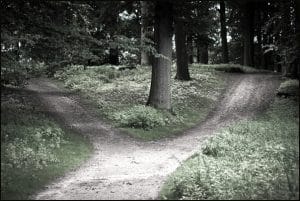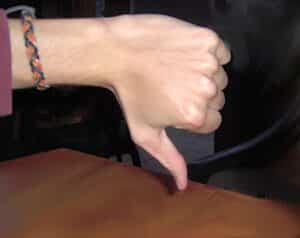Addiction’s Roots, Part 3 | Childhood Obesity News

As we learn from Dr. Pretlow’s “A Unified Theory of Addiction,”
Moving the opposing drives out of equilibrium, by avoiding or resolving the underlying problem/stressful situations, theoretically should mitigate the displacement mechanism and the addictive behavior.
Maybe that is what animals know how to do instinctively, with some of what scientists think of as their wacky, inappropriate behavior. When genuinely faced with a fight, maybe calming down is a drive equally important to the fight drive. They have, after all, not only the instinct for individual survival but an obligation to help their whole species survive.
A human, as mentioned in the previous post, can make a choice to stay in a threatening or thwarting situation. Or a human can (generally with little, if any, thought) take the route of converting overflow mental energy into some kind of action that might give temporary relief, but will probably be harmful. In the case of a really unwise choice, the chosen action might even plant the seeds of an addiction.
Or that person can consciously choose a neutral displacement activity that, regardless of whether it does or does not help to solve the instigating problem, will at least not make the situation any worse.
Automatic versus conscious
Another thing a person can do is, deliberately decide to address the problem head-on. Displacing thoughtlessly and unwisely can lead to undesirable results, ranging from useless to addictive. Displacing consciously can give a person a chance to reset and regroup, resolve the initiating situation, and gain a healthy result.
The object is to rechannel or displace overflow mental energy produced by the stressful life situation and the tempting array of competing drives. For animals, the choices include fight, flee, freeze, feed, fornicate, fool around, fidget, and faint. For humans (and lab animals confined in cages with dope dispensers), their options include the possibility of catching an addiction.
If a human can discover a path more rewarding than any of those, and seize the opportunity to pursue it, that discovery and opportunity, and conscious choice, can divert them from a bad path. Humans have the great advantage of being able to willfully choose another drive that carries the potential for some kind of fulfillment — like creating some form of art, or mastering a skill.
Yet and still, the most appropriate and helpful choice, of course, is to address the problem. That is where the saying “Face It Don’t Displace It” comes into play. A person has an option that is not granted to an animal — the opportunity to utilize the smartphone app called Brainweighve. We are talking about a new therapy that holds out the possibility of being adaptable to any addiction. It consists of…
(1) helping the individual identify the problems or stressors that form the basis of the opposing drives (displacement sources), and (2) creating strategies to either avoid or effectively resolve these problems/stressors. Success does not depend on totally resolving or avoiding the person’s problematic situation, it is just necessary that the opposing drives are pushed off dead center (either face or escape) and no longer in equilibrium.
Your responses and feedback are welcome!
Source: “A Unified Theory of Addiction,” Qeios.com, 03/09/23
Image by Carsten Tolkmit/CC BY-SA 2.0 DEED








